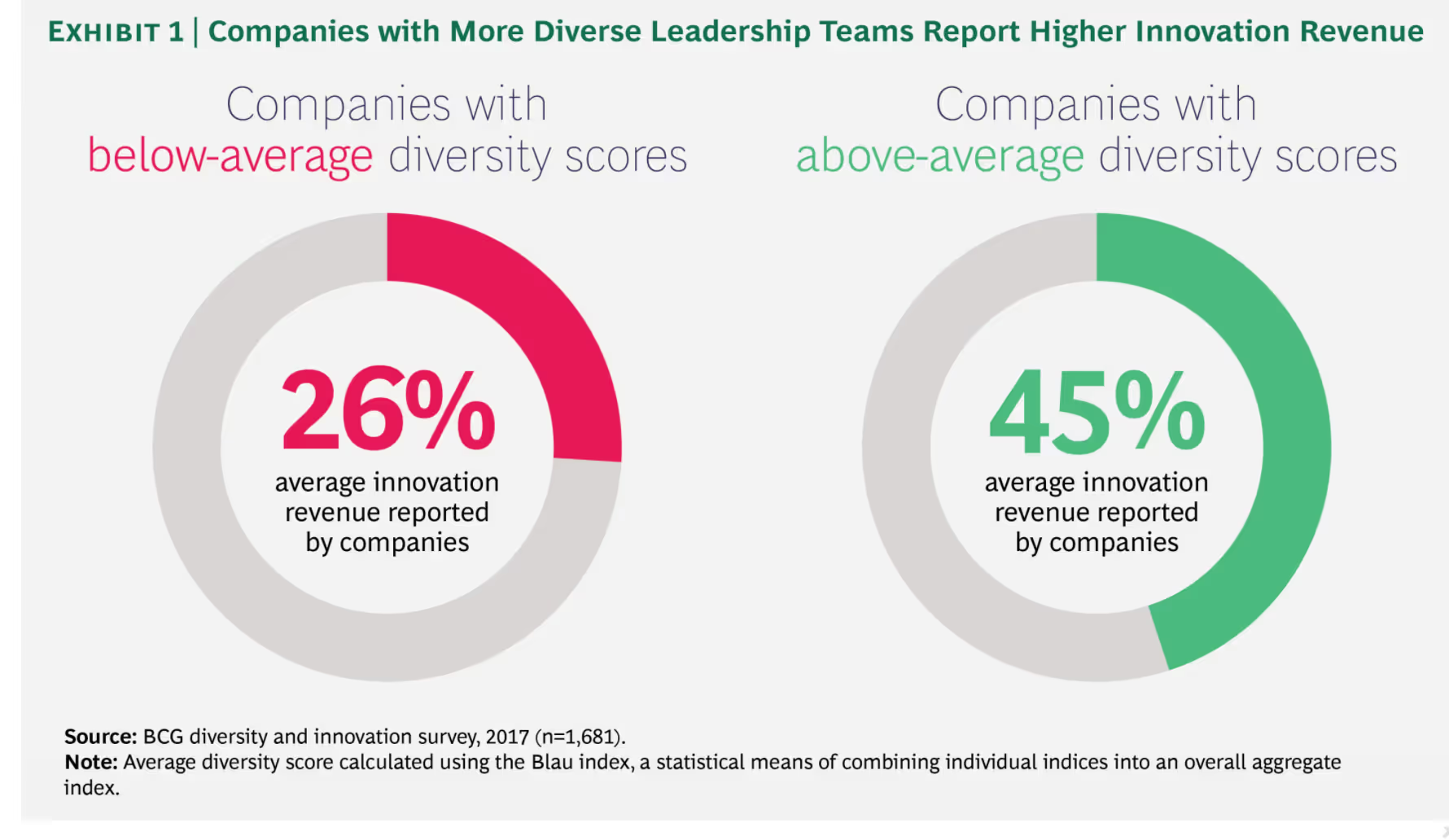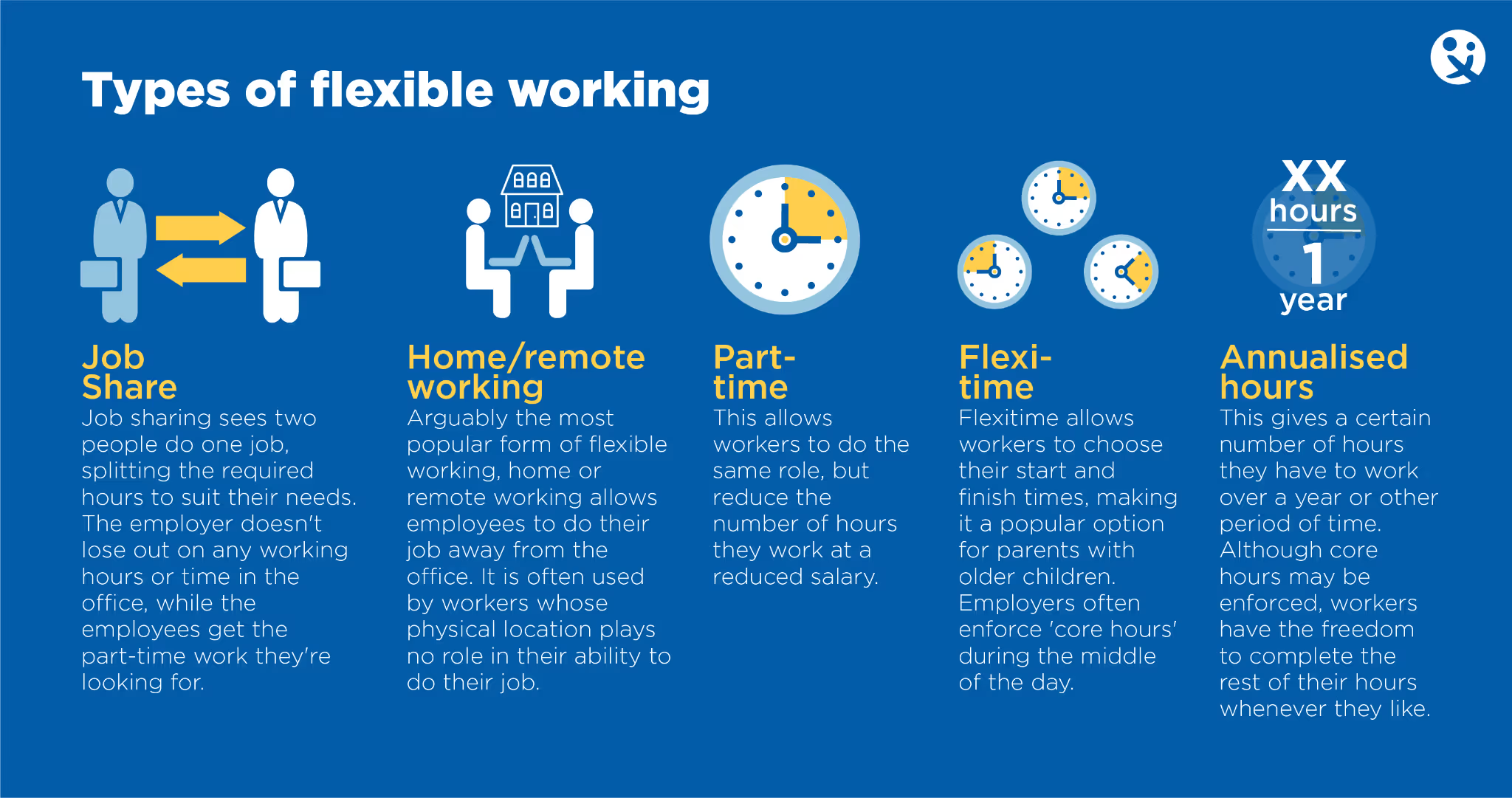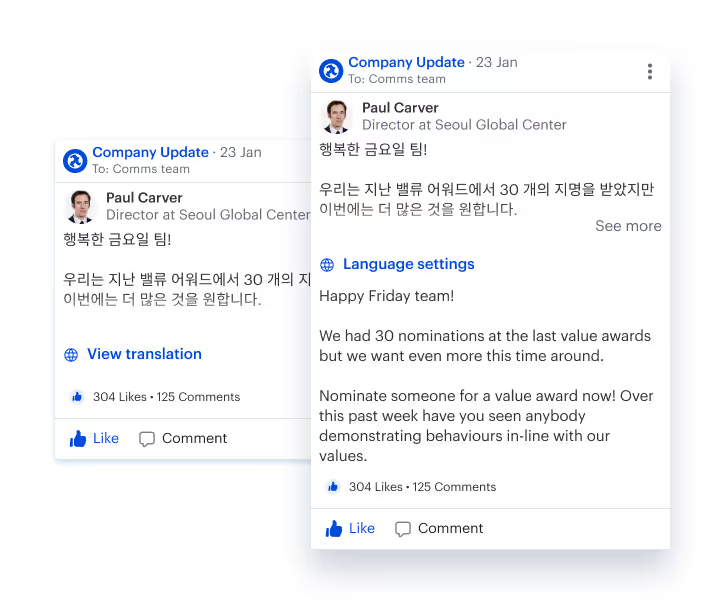Diversity and inclusion aren’t just HR trends. They’re strategic issues.
Studies show that lack of inclusion in the workplace costs U.S. businesses up to $1.05 trillion. Insights highlighting the costs of poor diversity measures are forcing companies to reevaluate existing policies and practices.
Specifically, the COVID-19 global pandemic has shined a light on diversity and inclusion issues affecting frontline workers.
On the flip side, companies that implement diversity and inclusion strategies are reaping benefits such as increased employee engagement, better retention, and more creative problem-solving.
Here’s what you’ll learn
- Current state of diversity in the workplace for frontline workers
- How a lack of diversity in the workplace affects frontline workers
- Business benefits of providing diversity in the workplace
- What diversity in the workplace looks like
- Obstacles to diversity in the workplace
- How to promote diversity and inclusion in the workplace
- Final thoughts: championing diversity in the workplace for frontline workers
In this post, we’ll discuss the current inclusion challenges facing frontline workers. We’ll also outline how businesses can better promote diversity in the workplace – and how to include it in your internal communications.
Current state of diversity in the workplace for frontline workers
Frontline workers in the United States are employed in the following six industries:
- Grocery, convenience, and drugstore
- Public transit
- Trucking, warehouses, and postal service
- Building cleaning services
- Health care
- Child care and social services
When the U.S. government issued mandated business shutdowns, these essential industries remained open. The frontline workers who keep these businesses running experienced pandemic-related stress and risk of exposure to the COVID-19 virus.
Here’s a quick look at the demographics of the more than 31 million frontline workers in the United States:
- 64.4% female / 36.6% male
- 58.8% white
- 17.0% Black
- 16.3% Hispanic
- 6.7% AAPI (Asian American / Pacific Islander)
Although women make up most frontline workers, they’re underrepresented in the public transit (29.1%) and trucking, warehouse, and postal service (22.7%) industries.
How a lack of diversity in the workplace affects frontline workers
Frontline workers are the face of your company, and they provide valuable insights into your customers’ needs and pain points. However, if you don’t prioritize diversity and inclusion in your frontline workforce, you could risk losing many of these high-impact team members.
Here are a few ways lack of inclusion and diversity in the work environment creates a negative experience for frontline workers:
Poor communication
Communication between team members with different native languages or cultures can be challenging. Add to that the fact your frontline employees aren’t necessarily in the office every day; they’re out in the world facing customers.
Without communications systems in place that cater to all of your employees, your frontline workers can feel confused or disconnected from the greater team. In more extreme cases, poor communication channels can lead to conflict between team members.
Increased chance of discrimination
A lack of diversity creates a workplace environment with a higher chance of discrimination.
When companies have a clear majority profile, it’s more likely for an employee who doesn’t “fit the mold” to experience harassment and discrimination. If you don’t have diversity in management positions, it’s harder for employees to speak up about harassment or other negative experiences.
Less incentive to feel engaged at work
Even if frontline employees don’t experience harassment at work, lack of diversity leads to lower employee engagement. A frontline employee who’s different from the workplace majority can experience isolation and feel they’re not seen or heard.
And if your company tends to promote only those who fit the majority, then employees who feel different won’t see room for long-term growth that keeps them engaged.
Ultimately, employees who don’t feel safe or valued in your organization are more likely to leave. Over time, the cost of continually replacing alienated and dissatisfied employees will cost your business.
Business benefits of providing diversity in the workplace
Creating a more diverse place and inclusive culture doesn’t just benefit your frontline employees; it’s a competitive business advantage too.
Here are the top benefits that businesses report after investing in diversity and inclusion programs:
Increased perspectives and creativity
A diverse workforce brings unique perspectives to the table, which increases creativity and problem-solving. According to a Boston Consulting Group study of more than 1,600 companies, teams with diverse leadership drive almost 20% more innovation revenue than their counterparts.

Increased profits
According to the Wall Street Journal, the 20 businesses ranked the highest in diversity and inclusion scores recorded 12% operating profit margins. Companies who ranked low on diversity initiatives, on the other hand, only generated operating profit margins of 8%.
Bringing together people from different backgrounds gives you a broader customer perspective, results in better decision making, and helps you avoid tone-deaf features or marketing campaigns.
Different perspectives in your business help you identify and capitalize on more market opportunities.
Reduced employee turnover
Higher employee engagement remains one of the top benefits of hiring diverse teams — businesses with better employee engagement experience less turnover in their workforce.
What diversity in the workplace looks like
It’s clear that successful workplace diversity and inclusion efforts can give businesses a strategic advantage.
But what exactly does diversity in the workplace look like?
It turns out that diversity is, well, diverse. Business owners and leaders must consider several types of diversity, including:
- Cultural background diversity
- Religious diversity
- Gender identity diversity
- Race and ethnicity diversity
- Age diversity
- Neurodiversity
- Disability diversity
- Sexual orientation diversity
Modern diversity equity and inclusion (DEI) programs need to go further than race and gender diversity.
Companies also need to think about embracing diversity in all departments and at all levels of their organization. Diversity initiatives are most successful when they include leadership and management.
Obstacles to diversity in the workplace
While the benefits of workplace diversity may seem clear, many companies struggle to implement effective diversity programs.
The primary obstacles businesses face when creating a diverse and inclusive environment are:
- Leadership buy-in
- Manager training
- Lack of awareness
- Encouraging honest feedback from employees
How to promote diversity and inclusion in the workplace
- Expand where you post job notifications
- Train leaders and managers
- Allow employees to take off cultural and religious holidays
- Offer on-site daycare
- Extend options for flexible hours
- Use an app with on-demand translation
- Solicit feedback from your employees
1. Expand where you post job notifications
Fostering a diverse workplace starts with the hiring process. Hiring managers can reach a more diverse talent pool by expanding where they share job openings. Your hiring department can build relationships with outreach groups, community hiring offices and chambers of commerce, and job fairs that cater to minority groups.
2. Train leaders and managers
You can’t assume that your managers know the value of diversity. To successfully implement diversity and inclusion efforts into company culture, both leadership and frontline managers need to buy into the idea of creating diverse teams.

As you make changes in your hiring process, conduct manager training sessions that underscore the benefits of an inclusive workplace. Give them tools to implement your initiatives on their teams.
3. Allow employees to take off cultural and religious holidays
When you hire diverse talent, demonstrate that your company honors and celebrates the various cultural backgrounds and points of view your team brings to the workplace.
One simple way to do that is by letting employees take off work for religious or cultural holidays that aren’t observed by the entire office. By creating a culture that empowers all workers to observe important holidays, you can increase employee engagement and retention.
4. Offer on-site daycare
Many diversity initiatives focus on race and ethnicity, but gender diversity is an equally important facet. Although gender roles are expanding, access to quality childcare presents a significant challenge to working mothers. During the COVID-19 pandemic, 2.9 million women left the workforce between March and September 2021, when schools closed.
According to Care.com, over 60% of parents would be more loyal to their company and have better job performance if they had access to employer-subsidized child care.
Let’s face it: your employees’ lives don’t revolve around their jobs. Many of them want to start families and raise children. If you consider child care a business issue, you can improve retention and job performance.
5. Extend options for flexible hours
If you can’t offer employer-subsidized child care, then consider expanding your flexible work hour options. Telecommuting, remote work, part-time positions, and job sharing help you provide equal opportunity to a more diverse talent pool.

Flexible work hours will grow increasingly important as more baby boomers move into retirement and old age. Minorities rely less on professional care for the elderly. So, many millennials are entering an era where parent care and child care compete with work for their attention.
Offering remote work or even hybrid work models means your diverse employees won’t have to choose between work and parent care. You’ll have a more engaged team that feels seen, heard, and supported.
6. Use an app with on-demand translation
It’s not enough to focus on hiring people from diverse backgrounds; you have to ensure that your workplace culture feels inclusive to everyone. If you create a recruitment process that succeeds in cultivating a diverse workplace, consider using an app with on-demand translation.

Make it possible for everyone at the company to access your internal communications in their native language.
7. Solicit feedback from your employees
Bottom line, fostering diversity and inclusion in the workplace is an ongoing process. You can’t do it all in one fell swoop. To ensure your entire team feels heard, consistently ask for feedback from employees.
That’s helpful when starting, and it lets you measure your success as you roll out changes to company culture. Keep in mind that change doesn’t happen overnight. Diverse employees may not feel comfortable voicing concerns to managers or other leaders in person. So, consider using an internal communications app to let employees submit feedback.
Final thoughts: championing diversity in the workplace for frontline workers
Implementing diversity and inclusion initiatives helps you create a workplace where your employees feel included and empowered. When you have an engaged team of diverse employees, your business performs better.
Explore Blink today to learn more about technology solutions that improve engagement and retention for everybody on your team.

